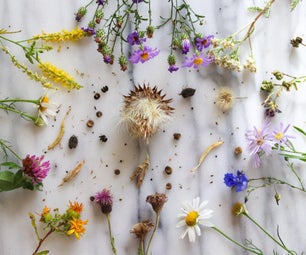Introduction: Successful Container Gardening
Many people have that 'Green Thumb' and really enjoy gardening but don't live in a place where there is enough room to do any gardening.
Still others who possess the 'Green Thumb' for in the ground planting are frustrated by trying to satisfy their need to grow things when it comes to planting in containers.
Here is a simple yet inexpensive solution to the problem to successfully gardening in containers.
Step 1: Materials
All you need to get started is any kind of non degradable container, depending on what you want to grow, ie, a plastic bin, large food containers like cottage cheese or soft butter spreads come in.
I had several of those large plastic bins that slide under the bed and the deeper ones from Wally World, redwood planters that look like half barrels and have used 2 and 3 liter soda bottles (https://www.instructables.com/id/Go_Green_Upside_Down_Hanging_Planters/) and made a hanging herb garden on my patio! You need to determine container size by root depth and recommended spacing.
Get some potting mix, compost if you need it, garden bark or some kind of filler that won't pack down, pre-started plants or seeds, and a cardboard roll from either, toilet tissue, paper towels or gift wrap, depending on how deep your container is.
Step 2: Where to Put Your Container
First decide where you want to put your container garden, if it is outside you don't need drainage protection. If it is inside you need to protect the area below. I use the lids off my containers as drip catchers.
Second determine how much soil your container will hold. Fill the container with potting mix or garden soil specific to the plant then measure it by pouring it into a 5 gallon bucket. Add an equal amount of compost, if you have some, if not you can buy it in most garden centers. Mix it well with a stick or broom or mop handle.
(Optional) Add a little extra kick to the soil by combining and adding in the following for every 5 gallons of soil mixture:
3/4 cup used Coffee Grounds that have been rinsed
10 - 12 egg shells that have been finely crushed and are powdery
1 1/4 cup Epsom Salt
3 Tbl Instant Tea Mix
Don't overload your container as your plants need root space, pay attention to the planting guidelines on the plant or packaging.
Move your container to its designated place and prepare your container by making sure you have sufficient drainage holes in the bottom then cover the bottom with some rocks, garden bark, packing worms or anything that will not pack down tight and allow drainage so your plants won't be left sitting in water and develop root rot.
Step 3: Preparing to Plant
To provide a more efficient watering system that gets the water all the way through the soil to the roots and not just on top take a cardboard tube (toilet paper, paper towel or gift wrap core, depending on depth of the planter) stand it in the middle of the planter on top of your drainage material then pack your soil mixture around the tube so it stays upright. You can cut the tube level with the top of the soil.
Fill the tube with more drainage material.
Step 4: Add Plants or Seeds
You are now ready to add your plants or seeds. If you are using pre started plants from the lawn and garden shop plant according to directions.
If you are starting from seed plant according to directions and cover your container with any clear plastic wrap and place in a sunny location. Once seeds begin to sprout and are 2 - 3 inches tall discard the plastic wrap.
Pour water in and around the tube when watering for even distribution to the root system and in time the tube will disintegrate but the drainage material will remain intact.
Step 5: Pest Control
Add some pest control by taking plastic lids from used containers like yogurt, frosting, cottage cheese, butter tubs, etc., depending on the size of your container and smear a good thick coating of Vaseline or Karo Syrup on the inside.
Set them sticky side up on top of the soil in your container. If you have a very large container you may want to add more lids. Replace as necessary.
Your Container is now complete and ready for you to enjoy!
Participated in the
Get in the Garden Contest













